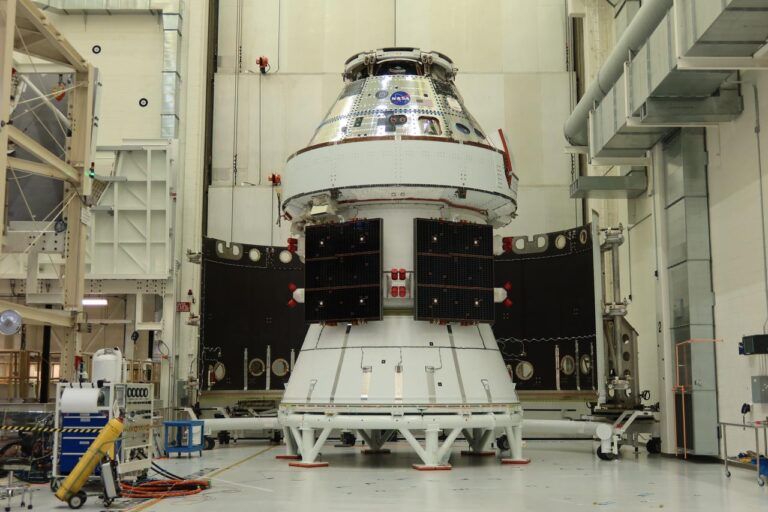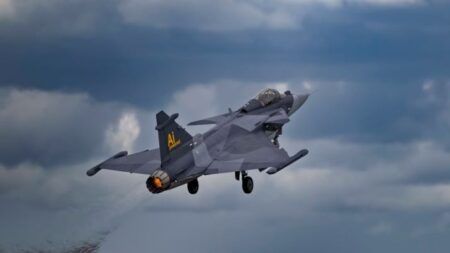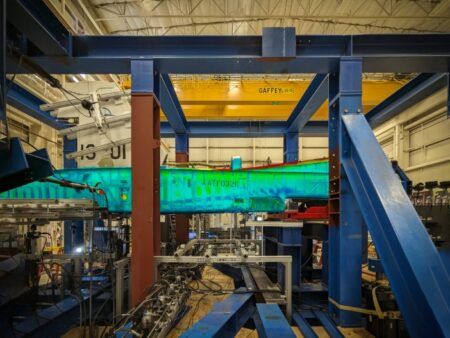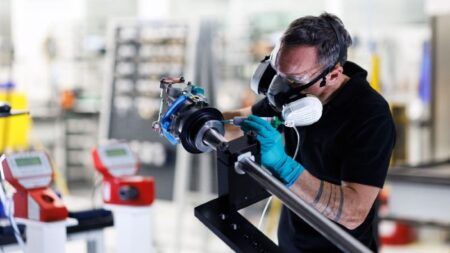Engineers at Lockheed Martin completed assembly and testing of the Orion Artemis II spacecraft for NASA this week.
Orion will transport astronauts to the Moon for the first time in more than 50 years, although they will not land.
Scheduled to launch in early 2026, Artemis II and the Orion spacecraft will travel for 10-days. The trip will take NASA astronauts Reid Wiseman, Victor Glover, Christina Koch and Canadian astronaut Jeremy Hansen. 4,600 miles (7,400km) beyond the Moon and back to Earth.
According to Lockheed, which built Orion’s crew module, module adaptor and launch abort system, it is the most advanced, human-rated, deep space spacecraft ever built.
Kirk Shireman, vice president of Human Space Exploration and Orion program manager at Lockheed Martin said, “The Orion spacecraft completion for Artemis II is a major step forward in efforts to develop a long-term lunar presence. It’s exciting to think that soon, humans will see the Earth rise over the lunar horizon from our vehicle, while also traveling farther from Earth than ever before.”
Orion upgrades
The uncrewed EFT-1 and Artemis I test flights were the first steps in validating the spacecraft’s core systems. Artemis II will put Orion through its final tests in deep space with a crew on board and will include learnings and significant enhancements gleaned from the Artemis I mission.
To support the health and safety of the crew, new systems have been added, which include life support – air, water, thermal control, waste management – displays and controls, audio communications, an exercise machine and a fully functional Launch Abort System. Additionally, the vehicle is outfitted with a subset of docking sensors and an experimental laser communication system, enabling high data-rate communications and paving the way for future missions.
Launch preparations
NASA’s Exploration Ground Systems (EGS) team will now perform the final preparations for launch. The spacecraft will be moved to NASA’s Kennedy Space Center where it will be loaded with propellants and other consumables such as water and oxygen, and the launch abort system and its protective fairings will be installed.
When these preparations are completed it will then be transported to the Vehicle Assembly Building, lifted onto the Space Launch System (SLS) rocket and undergo pre-launch preparations.
Artemis II mission aims
During the mission, the crew will evaluate the spacecraft’s performance, test its navigation and communication systems, and conduct scientific experiments. They will also perform a rendezvous operation with the SLS upper stage, practice the docking activities needed for future missions, including Artemis III – the mission which will be the first human lunar landing since Apollo 17 in 1972.
With Orion for Artemis II is completed, Lockheed Martin is building the Orion spacecraft needed for future Artemis missions. Artemis III and IV vehicles are in the Operations and Checkout Building, while the pressure vessel is being welded at NASA’s Michoud Facility in New Orleans.
Lockheed Martin is contracted to develop Orion spacecraft up to Artemis VIII.





